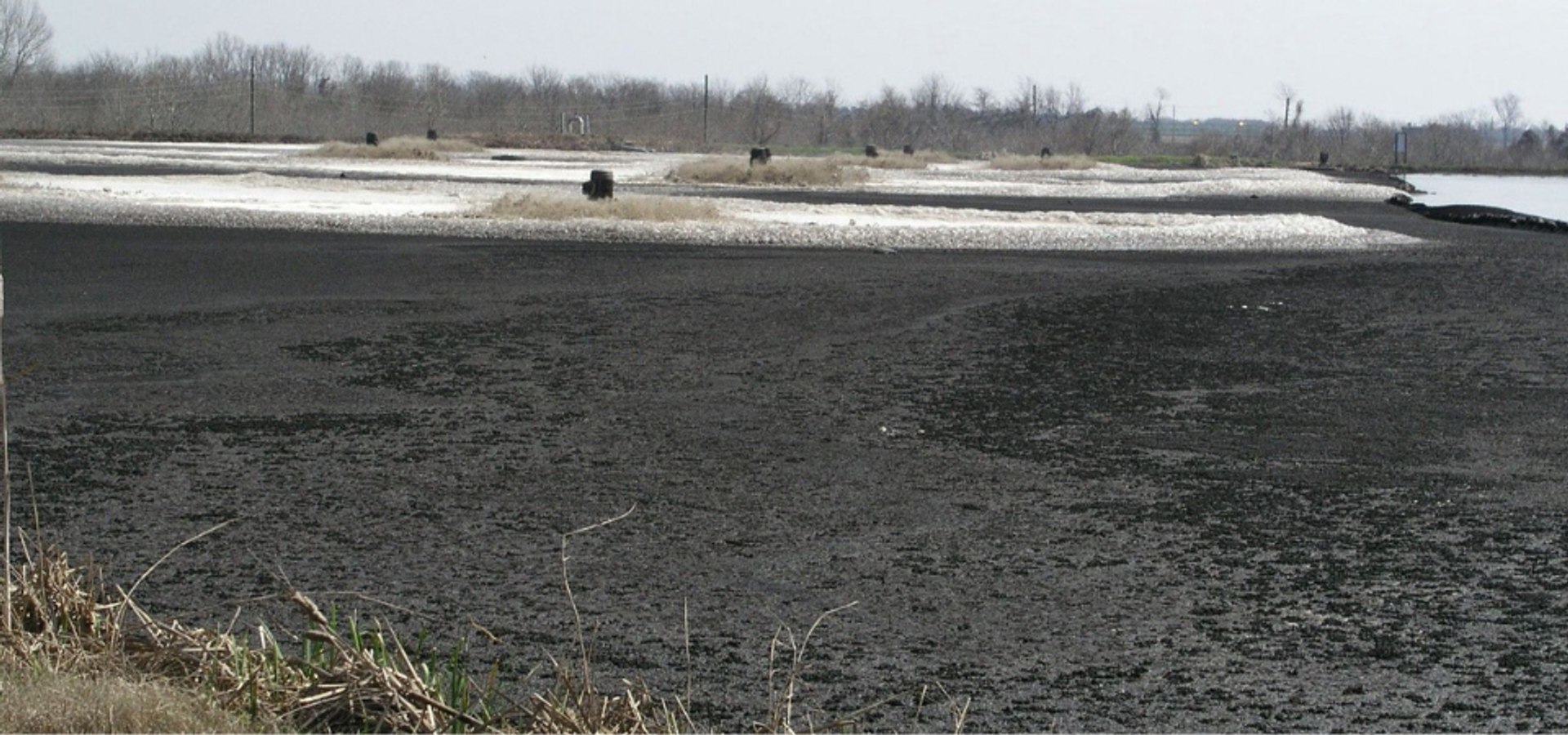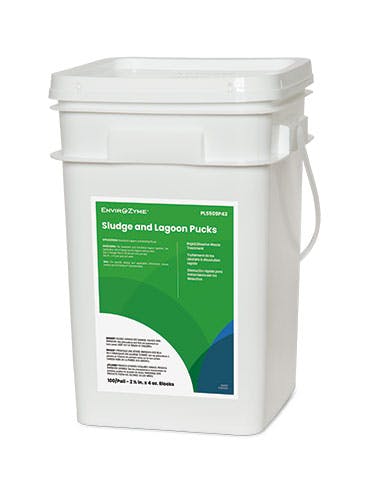
The True Cost of Sludge Accumulation
Anatomy of a Lagoon
Wastewater lagoons are man-made basins that leverage natural decomposition to biologically treat organic waste. They are typically composed of 4 volumes:
- Settable solids sink to the bottom of lagoons and are converted by bacteria into sludge, which occupies the bottom layer. The exact sludge storage volume is based on the sludge accumulation factor (which varies based on type of waste).
- Soluble organics are broken down, also by bacteria, in the liquid treatment volume.
- Treated water is stored in the effluent storage volume, which is typically large enough for 6–12 months of storage.
- Freeboard is empty space that protects lagoons from overflowing. The amount of space required varies based on local regulations.

Lagoon Types and Sludge Buildup
As lagoons age, the sludge layer grows, and the liquid treatment volume shrinks. The rate and pattern of sludge buildup differs based on several factors, including the lagoon type:
- Facultative lagoons do not feature any aeration equipment, and dissolved oxygen is incorporated by wind blowing over the water surface and/or photosynthetic activity. Sludge tends to buildup fastest in these types of lagoons.
- Aerated lagoons contain aeration equipment to boost dissolved oxygen and improve mixing, and sludge generally builds up around aerators and in corners.
- Anaerobic lagoons are covered, so no oxygen is added to the treatment volume. While sludge buildup is the slowest in this type of lagoon, high retention times and extreme malodors are problematic.
- Other factors that influence sludge buildup are depth, surroundings, climate, and loading.
Sludge Treatment: Problems
At $350 per dry ton of sludge on average, normal operations with 2,500–5,000 dry tons can easily spend $1,000,000 on dredging.
As the sludge storage volume of any lagoon nears capacity, it is recommended to remove half of the accumulated sludge, most commonly through dredging. At $350 per dry ton of sludge on average, normal operations with 2,500–5,000 dry tons can easily spend $1,000,000 on dredging. Even if performed only at the target 15-to-20-year mark, the costs are daunting, and excess accumulation forces many wastewater lagoons to deal with sludge much sooner.
If sludge is allowed to accumulate beyond the sludge storage volume, the other 2 volumes (treatment and effluent storage) become too depleted to ensure adequate retention time, forcing water out of the lagoon before it has been fully treated. Combined with the fact that excess accumulation spurs widespread anaerobic degradation in facultative and aerated systems, this leads to:
- Elevated BOD and TSS in effluent
- High concentrations of ammonia in the water column and effluent
- Permit exceedances and related fines
- Noxious gases (e.g., H2S)
- Lagoon turnover/floating sludge

Sludge Treatment: Solutions
… Lagoons treated with bacteria experience sludge reductions from 40% all the way up to a whopping 91%.
Fortunately, these problems and dredging can be eliminated or, at the very least, deferred in all but the most severe cases of sludge accumulation.
For aerated systems, the entire lagoon should receive adequate dissolved oxygen, and the entire water column should be thoroughly mixed to facilitate the greatest direct contact between bacteria and solids. Operators may need to consider switching, supplementing, or repositioning aeration technologies that are causing “dead zones” (such as lagoon bottoms with surface aerators) or are mixing too mildly (such as fine bubble aeration systems).
To reduce existing sludge and prevent future buildup specifically in anaerobic and facultative conditions, many operators are turning to bioaugmentation with blends of specialized bacterial strains, bio-stimulants, and micronutrients. In trials conducted by EnviroZyme®, lagoons treated with bacteria experience sludge reductions from 40% all the way up to a whopping 91%. Remediation by bacteria is a fraction of the cost of dredging and also contributes to significant improvement of important physicochemical parameters.
While the courses of action available to treat sludge are relatively limited, consisting really only of dredging, aeration/mixing, and bioaugmentation, the ever-improving science behind bioaugmentation products is continuously boosting treatment outcomes and reducing treatment cost. EnviroZyme’s Sludge and Lagoon Pucks are our latest technology to maximize sludge reduction, accelerate waste digestion, and improve settling in emergency and maintenance situations. Because it is a biological extruded solid puck, it sinks deep into lagoons’ sludge layer for maximum exposure and effectiveness.
If you are interested in consulting with an expert to reach your quality improvement or cost savings goals for a lagoon or other body of water, please fill out the form below.
Loading...
